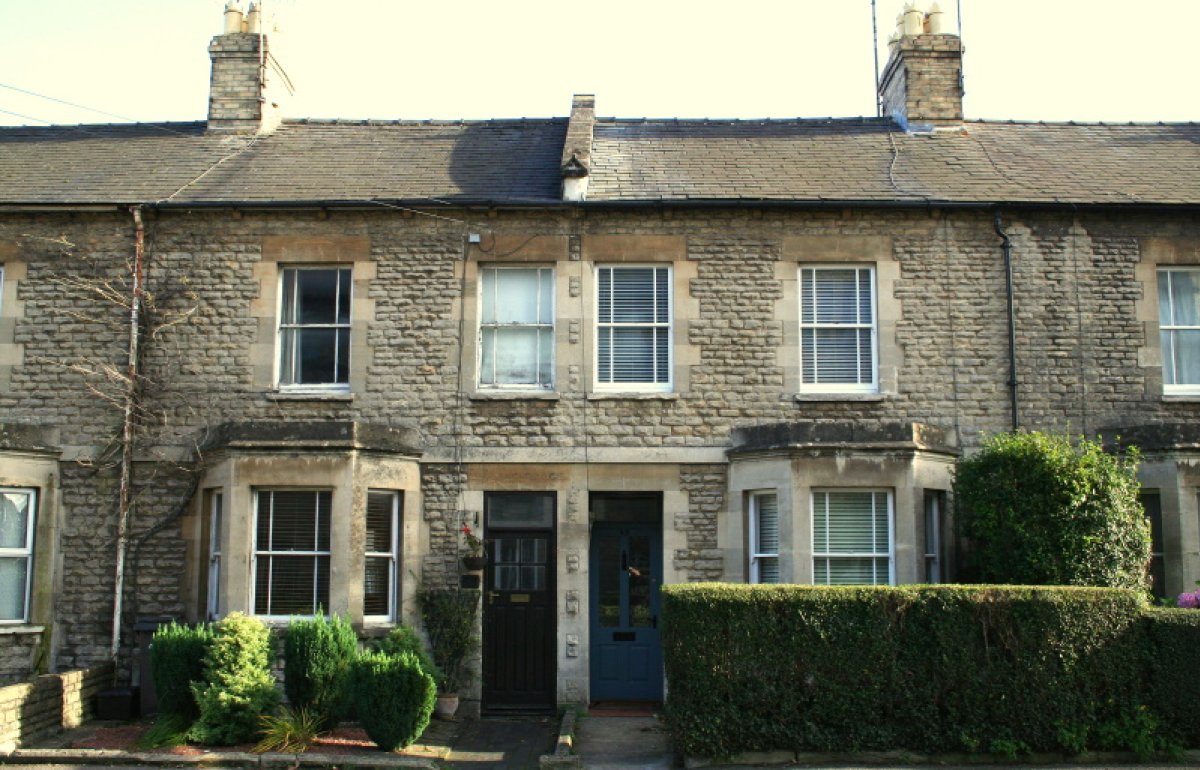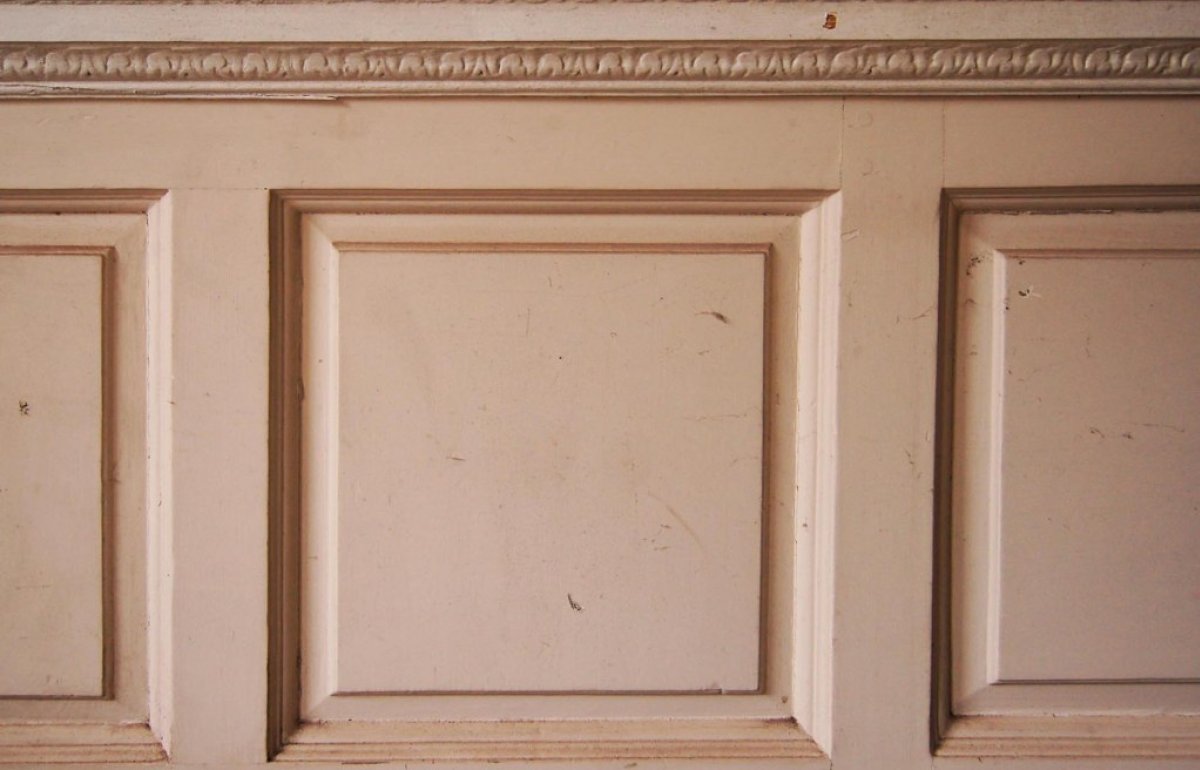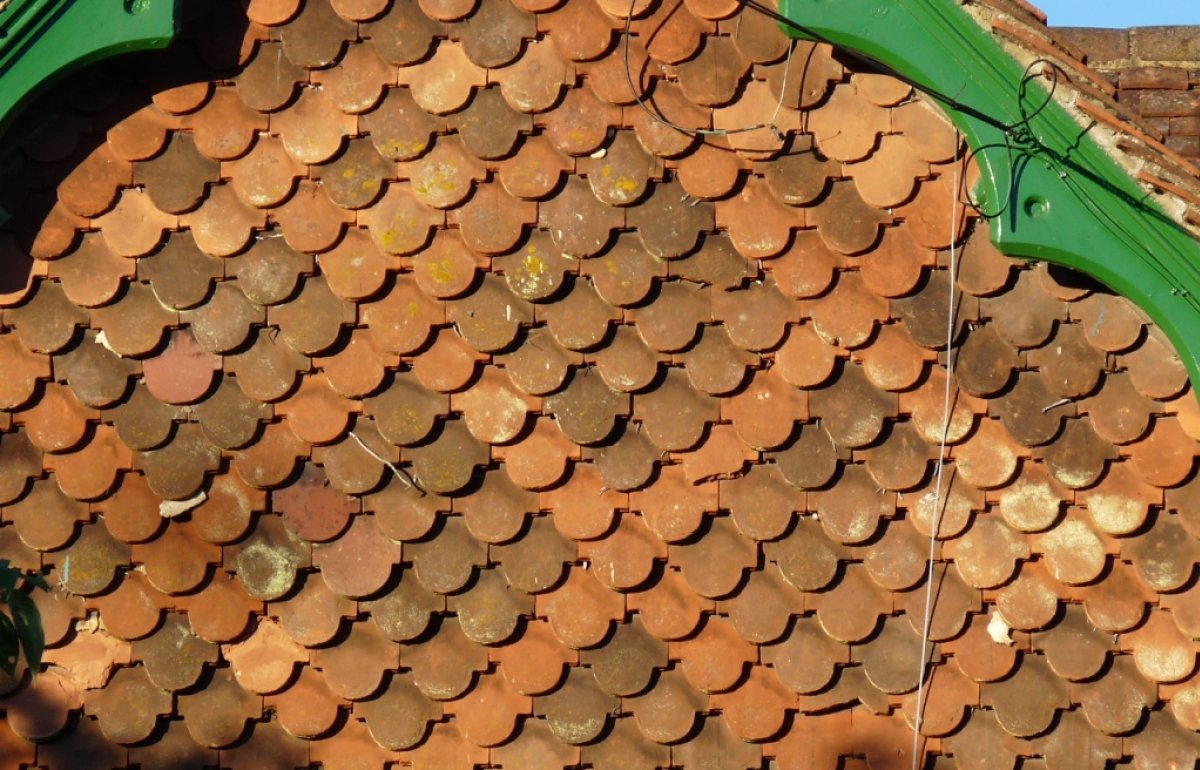Lead paint
In the 1980s the SPAB helped prevent an EU ban on lead paint. This article explains how it can be used safely in conserving old buildings.
What is lead paint?
Lead paint comprises lead pigment, usually lead carbonate (‘white lead’), bound in oil. The pigment creates either a white paint or a base for tinting with colour. Historically, linseed oil was the usual binder and turpentine the thinner, their proportions determining whether the finish was matt or semi-gloss. From the 20th century, the flow, gloss and drying time were improved by using an alkyd resin medium and the addition of titanium dioxide pigment boosted the covering power.
Lead tetroxide (‘red lead’) has been used extensively for metal primers. Mixed with lead carbonate, it formed a pink lead primer for joinery.
Where might lead paint be applied?
Lead paint was popular until the 1960s, particularly on timber and metalwork. It was also applied to lime plaster in grander buildings (this had to have carbonated to avoid an unsightly reaction, ‘saponification’) and, sometimes, stuccoed facades.
Toxicity concerns mean the supply of lead carbonate paint is now restricted by law for use on listed buildings (Grades I and II*, or in Scotland Grades A, B and C(S)), scheduled monuments and works of art. Where care is taken, its careful application is to be encouraged, especially for the protection of 18th- and 19th-century joinery and conservation of important historic interiors.
What are the pros and cons of lead paint?
Lead paint has unrivalled durability on timber, possesses good flexibility and is ‘breathable’. Its texture, depth of colour and mellow appearance are difficult to emulate with alternatives. It emits less environmentally-harmful volatile organic compounds (VOCs) than modern oil paints.
The main drawback with lead paint is its toxicity. A health risk only exists, though, where lead compounds are ingested or inhaled due to unsound or disturbed paint. Dust from the inappropriate sanding of old lead paint during its removal or redecoration is the greatest hazard. The presence of lead paint does not justify stripping out historic joinery.
How do I identify lead paint?
Old lead paint frequently has a creamy or soft colour. Rather than splitting and peeling, it may develop a fine, oblong pattern of cracking. A chalky surface can provide a further clue but is not exclusive to lead paint. Detached samples feel heavier than with other paints. Lead paint might be present in nearly any pre-1960s building. Its existence can be confirmed with a DIY test kit or more sophisticated analysis.
Where found, it could be safer to renew or overcoat lead paint than attempt its removal. If removing, use wet (not dry) sanding, chemical strippers or low-level heat.
How do I obtain lead paint?
Supplies of lead carbonate paint are limited but still available. The SPAB may be able to advise. You must declare that your intended use is lawful (see above), using a form the supplier usually provides. Approval takes several weeks. It is not required when buying red lead paint.
On buildings where the use of lead carbonate paint is no longer permitted, a compatible alternative, such as linseed paint, may enable the retention and overcoating of old lead-based layers.
How do I apply and renew lead paint?
External redecoration on a 5-10-year cycle is not untypical with lead paint and, internally, it needs renewing infrequently. Because it tends to erode rather than peel, surface preparation may require little more than washing with sugar soap and, where necessary, lightly rubbing down with wet abrasive paper. Only loose paint needs scraping off. When taking back non-lead overcoats, remove all stripper residue thoroughly. Vacuum cleaners must have HEPA filters. Children and pregnant women should not be present.
Lead paint should be well-stirred and applied thinly with high quality bristle brushes. Each coat must have dried properly before the next is put on. Natural oil-based formulations are slow-drying and demand great skill by the painter.



